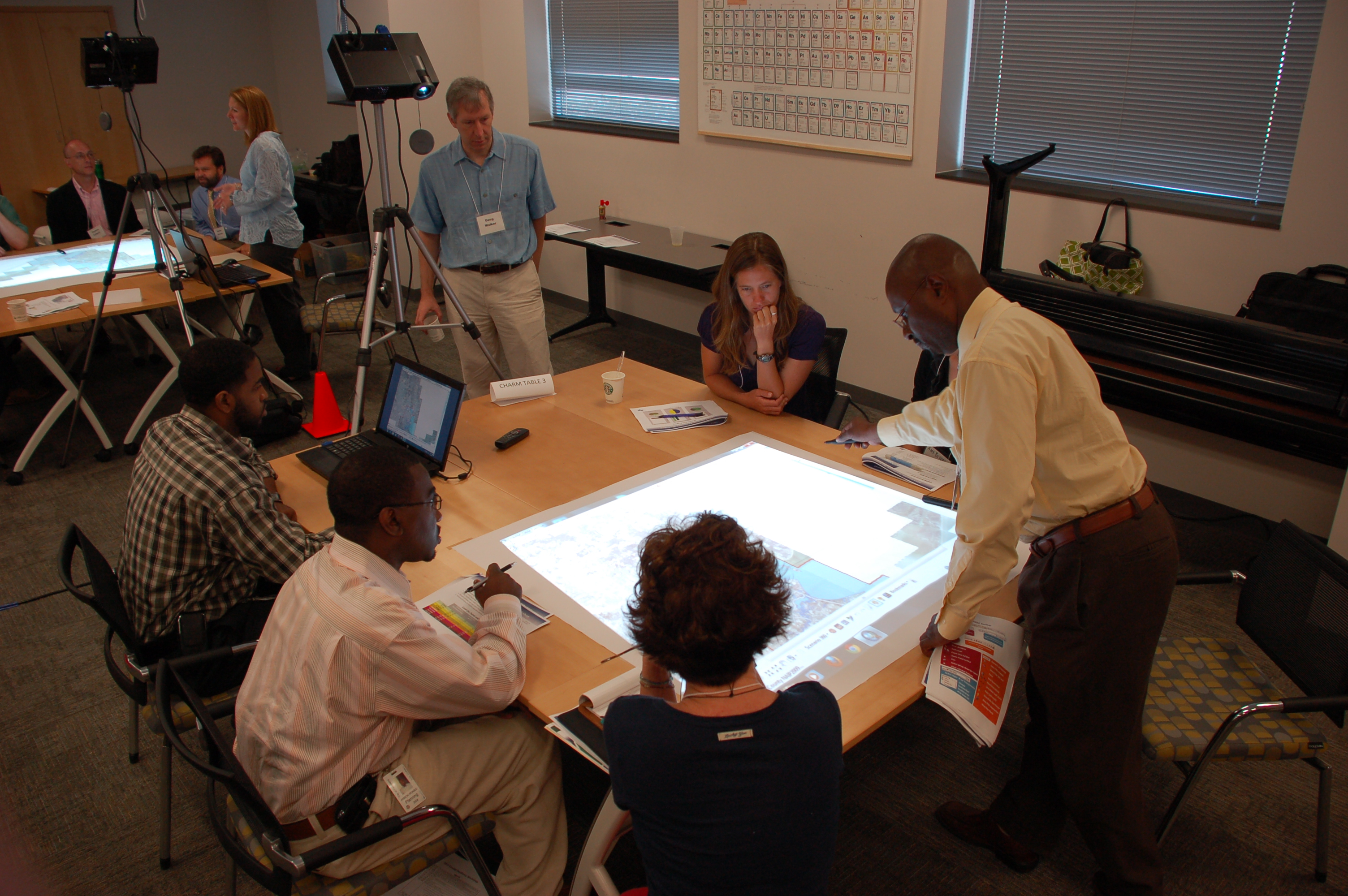
Participants view and discuss a land use map at a Galveston, Texas CHARM workshop. CHARM was developed by Texas Coastal Watershed Program/ Texas A&M AgriLife Extension Service/ Texas Sea Grant. The CHARM application can leverage local community knowledge for better long-term planning, and is an ideal tool for communities, watersheds, and environmental projects along the US Gulf Coast.
Hazard Mitigation Corps
David Godschalk, one of the elder statesmen of planning for hazard reduction, has called for the formation of a “hazard mitigation corps” along the lines of the agricultural extension service model (Godschalk, 2002). This corps would consist of a group of hazard mitigation agents based in “state universities to work with urban communities to provide hazard information and mitigation assistance.” The call is a recognition of both the pressing need communities have for hazard-planning assistance as well as the powerful knowledge base contained within the university community, which unfortunately often operates in a somewhat cloistered fashion with respect to the community.
Universities and the Land and Sea Grant System
The state university connection is important because that is where the Land and Sea Grant programs are housed. The Land Grant system has been called one of the greatest inventions of the American republic. Founded by Lincoln, the fundamental idea of the Land Grant system is to provide a way to engage the communities the land grant universities are intended to serve. Engagement is a critical term because it implies more than a one-way flow of information from university to the community. It implies feedback from the community to researchers, guiding them in their research, compelling them to answer questions of fundamental interest to the community. Universities are most powerful and credible when they use their resources to engage communities through convocation and deliberation (Gutmann, 2006), which is the classic extension modality.
The heart and soul of the land grant system, still fundamentally agricultural, has been the county agent. The county agent is tied to the university through affiliation, but he/she is based in a particular community and is guided by a community stakeholder committee. Extension specialists, scientists with one foot in the community and the other in the University, serve as effective bridges between the agents, who are generalists, and full time researchers. The Land Grant system of integrated research, extension, and education has been extremely effective, the primary agent in the complete transformation of American agriculture over the past 100 years. Sea Grant has extended this model to the coastal regions, focusing originally on fisheries production, but currently extending the concept to coastal community development and other issues.
The framework is in place for the hazard mitigation corps that Godschalk calls for. The pressing issues of population change and movement into hazardous areas, coupled with emerging coastal threats associated with global climate change, render Godschalk’s call more relevant now than ever before.



